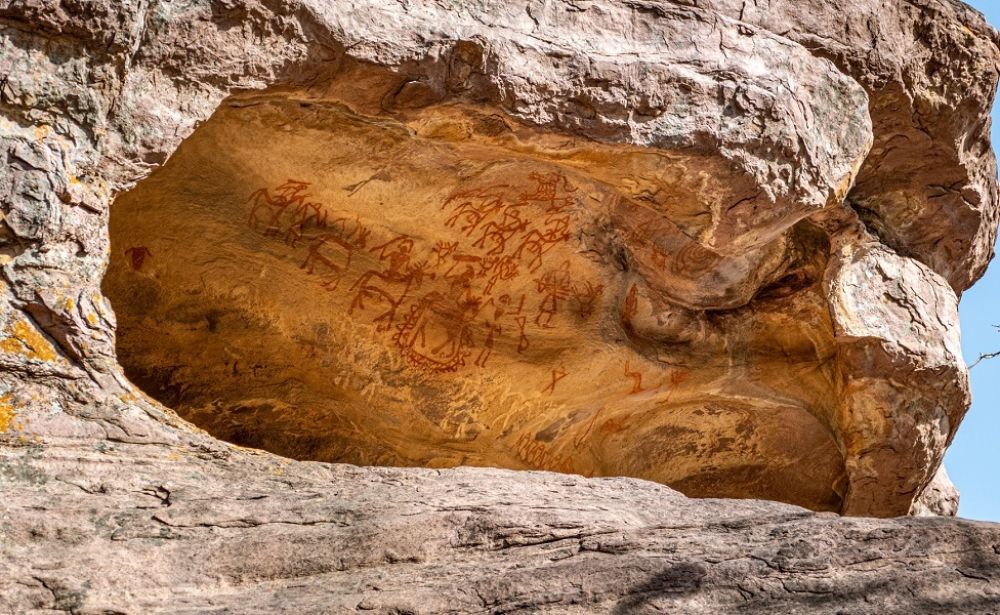

The Bhimbetka rock shelters, located in the Raisen District of Madhya Pradesh, India, are an archaeological treasure trove that offers deep insights into the prehistoric life of the Indian subcontinent. These shelters are a testament to the earliest human activities, with some paintings dating back to the Mesolithic period, showcasing a continuous human habitation for more than 100,000 years. This remarkable attribute led to its inscription as a UNESCO World Heritage Site in 2003.
The discovery of the Bhimbetka site is credited to Dr. Vishnu Shridhar Wakankar in the 1950s, who stumbled upon these rocks while on a train journey. Fascinated by their peculiar positioning, he later conducted a detailed study, which unveiled their historical and archaeological significance.
Initial studies and excavations brought to light a variety of paintings and artifacts that reflect the connection to significant transitions in human history, such as the advent of the Stone Age and the dawn of agricultural practices.
The rock shelters present a rich tapestry of images that depict the life and times of early humans. They cover a broad spectrum of themes, including hunting, dancing, music, horse riding, elephant riding, making honey, and various socio-religious rituals which signify the evolution of human consciousness and civilization. The range of paintings from different periods highlights the development of human expression, tools, and community life.
Preserving the delicate ancient artwork found in Bhimbetka is a priority for the Archaeological Survey of India (ASI). Due to the natural conditions that have preserved these paintings for millennia, the ASI has undertaken various measures to ensure the shelters remain undisturbed by modern human activity while allowing visitors to appreciate their importance.
Following its induction into the world heritage list, the site has undergone infrastructure developments to accommodate tourists while still preserving its integrity. Platforms and walkways have been constructed in a manner that minimizes contact with the natural site, ensuring that visitors can view the paintings without causing damage.
Tourists interested in visiting the Bhimbetka rock shelters can enjoy guided tours provided by knowledgeable local guides. These tours offer in-depth explanations of the artwork, the history, and the archaeological findings. The site is strategically equipped with information boards that provide valuable information in multiple languages to reach a diverse group of visitors.
The Bhimbetka site is relatively accessible by road from Bhopal, the capital city of Madhya Pradesh, and is a popular destination for history buffs, archaeologists, and cultural enthusiasts from all over the world.
Tourism at Bhimbetka has increased awareness about the site's global significance and has brought beneficial economic impact to the local communities. However, managing the balance between tourism and conservation is crucial for the sustainability of this ancient heritage.
Looking ahead, the authorities plan to further integrate modern technology in the form of virtual tours and augmented reality apps to enhance visitor experience while simultaneously protecting the site. These innovations aim to make the Bhimbetka rock shelters accessible to an even broader audience, ensuring that this window into prehistoric life continues to educate and inspire generations to come.